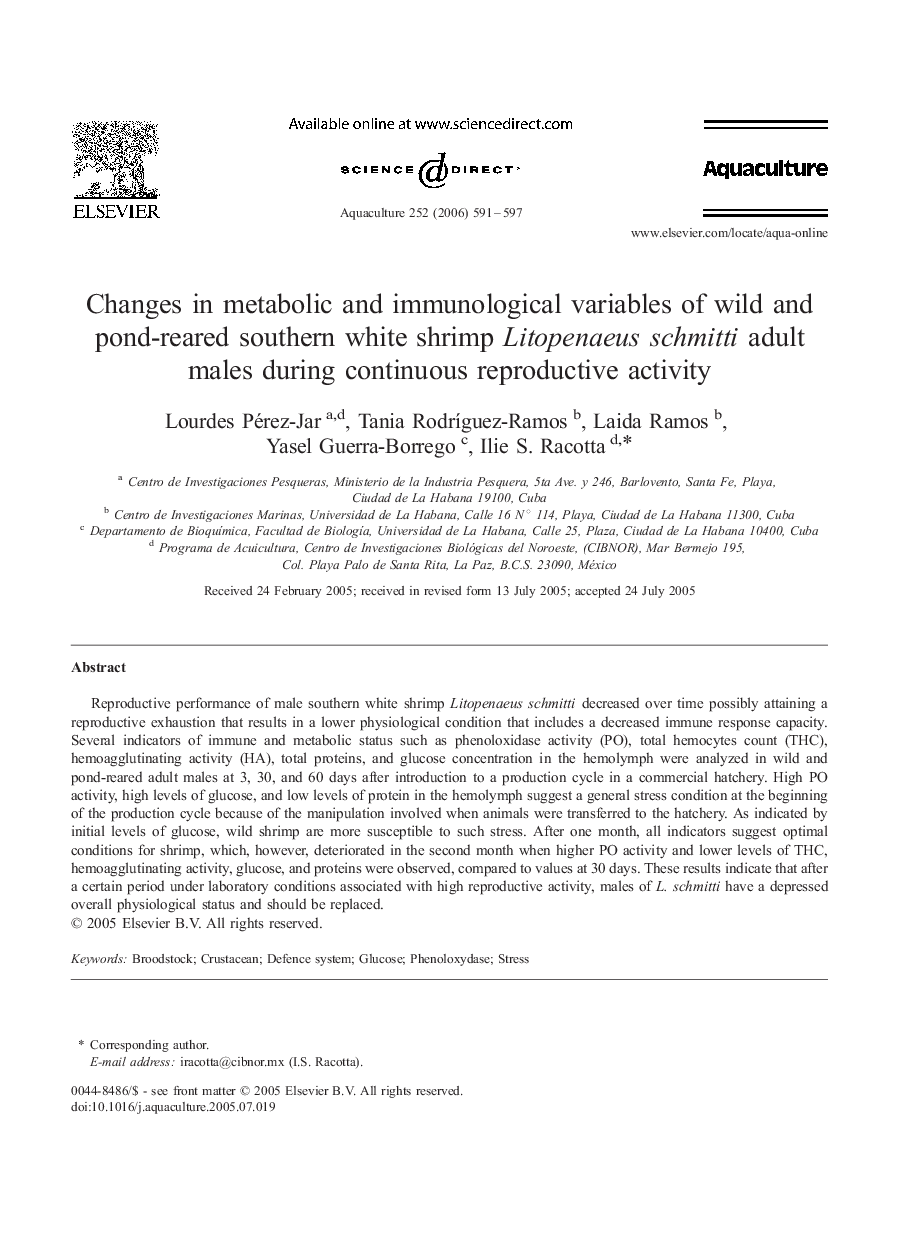| Article ID | Journal | Published Year | Pages | File Type |
|---|---|---|---|---|
| 2426190 | Aquaculture | 2006 | 7 Pages |
Reproductive performance of male southern white shrimp Litopenaeus schmitti decreased over time possibly attaining a reproductive exhaustion that results in a lower physiological condition that includes a decreased immune response capacity. Several indicators of immune and metabolic status such as phenoloxidase activity (PO), total hemocytes count (THC), hemoagglutinating activity (HA), total proteins, and glucose concentration in the hemolymph were analyzed in wild and pond-reared adult males at 3, 30, and 60 days after introduction to a production cycle in a commercial hatchery. High PO activity, high levels of glucose, and low levels of protein in the hemolymph suggest a general stress condition at the beginning of the production cycle because of the manipulation involved when animals were transferred to the hatchery. As indicated by initial levels of glucose, wild shrimp are more susceptible to such stress. After one month, all indicators suggest optimal conditions for shrimp, which, however, deteriorated in the second month when higher PO activity and lower levels of THC, hemoagglutinating activity, glucose, and proteins were observed, compared to values at 30 days. These results indicate that after a certain period under laboratory conditions associated with high reproductive activity, males of L. schmitti have a depressed overall physiological status and should be replaced.
